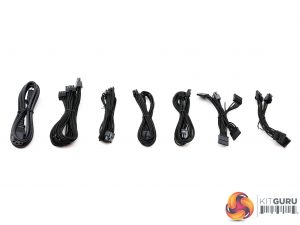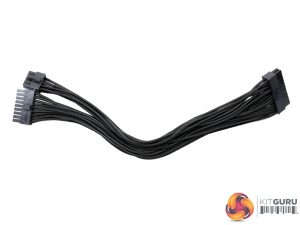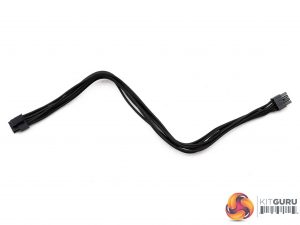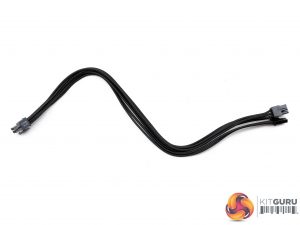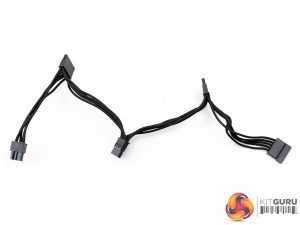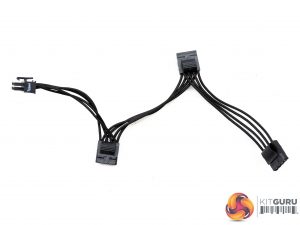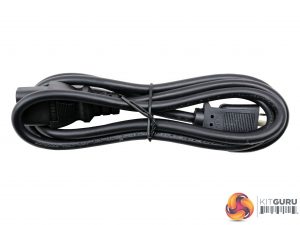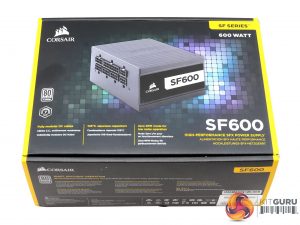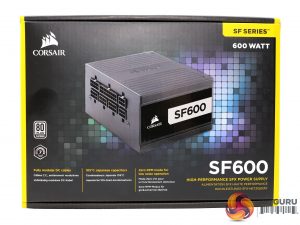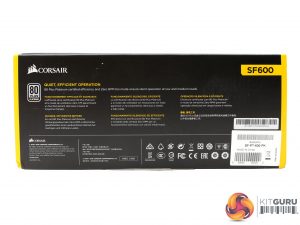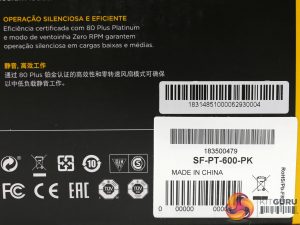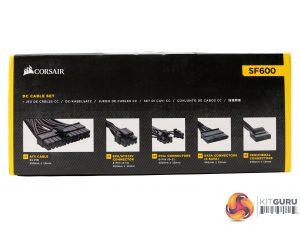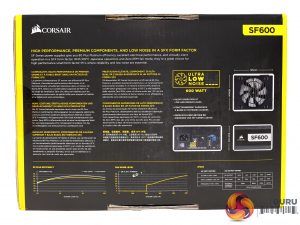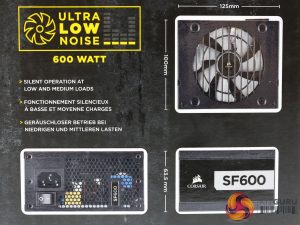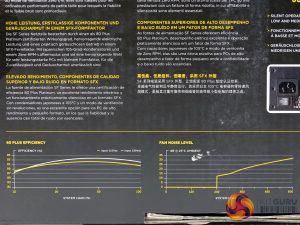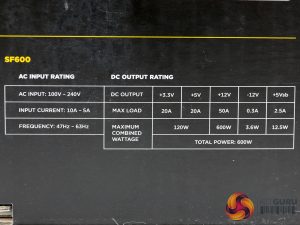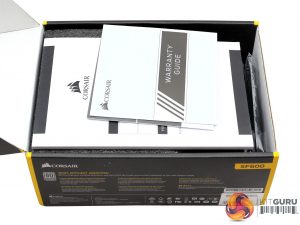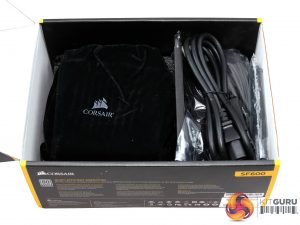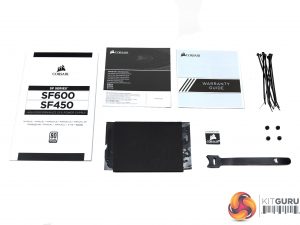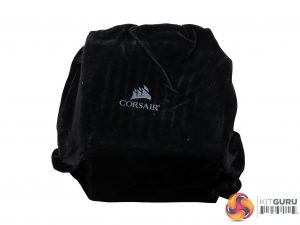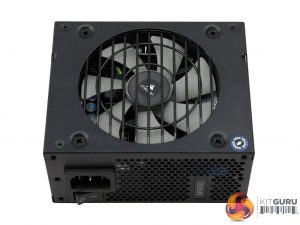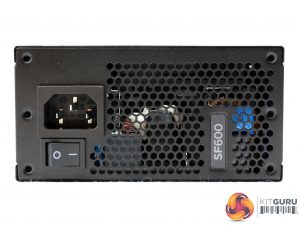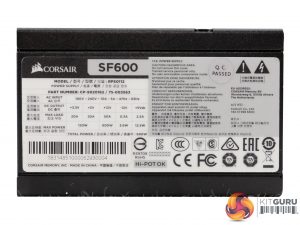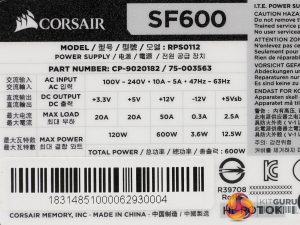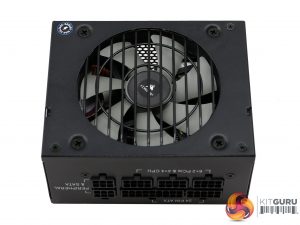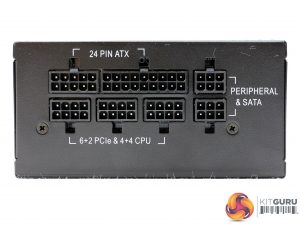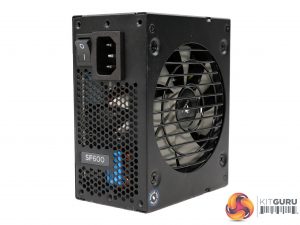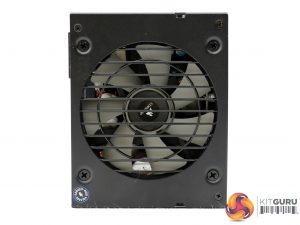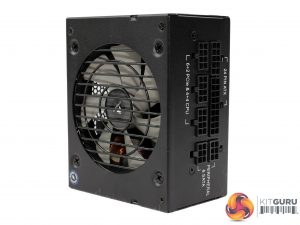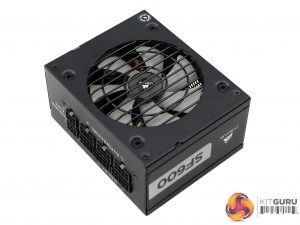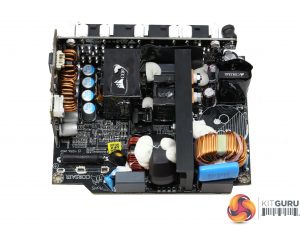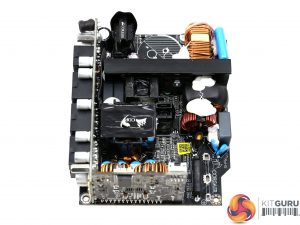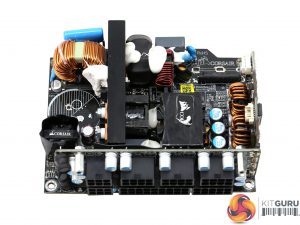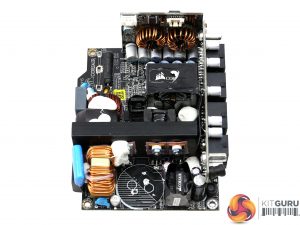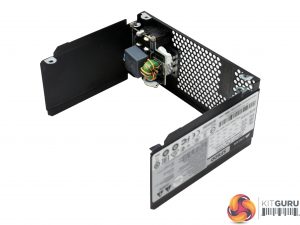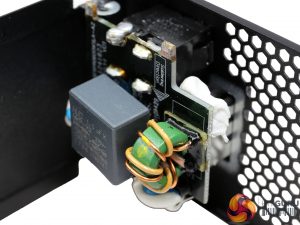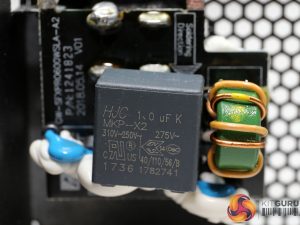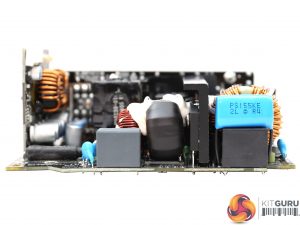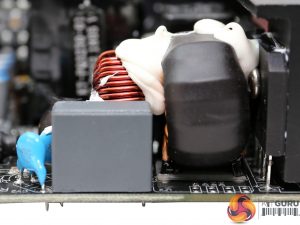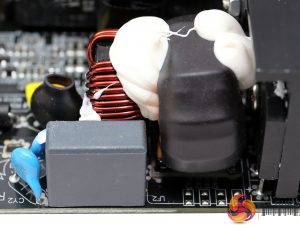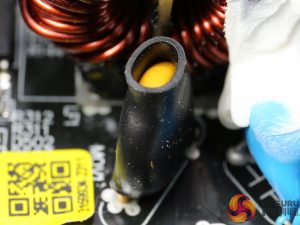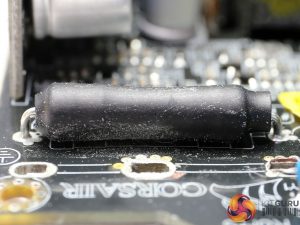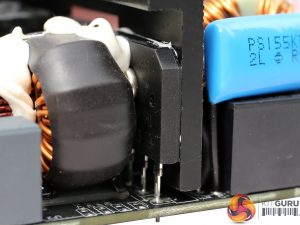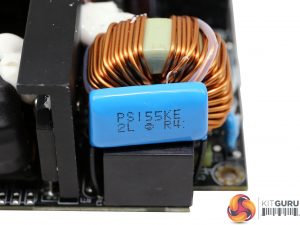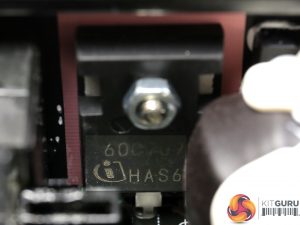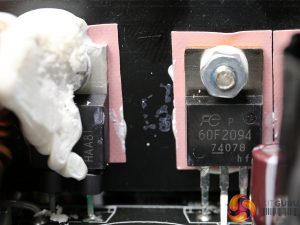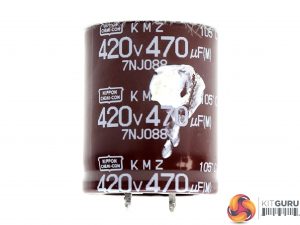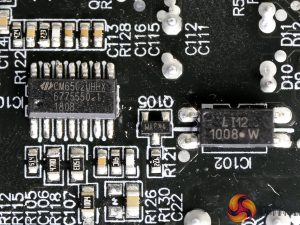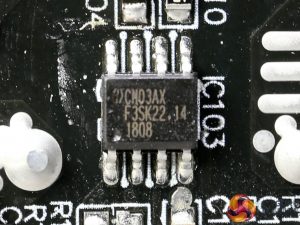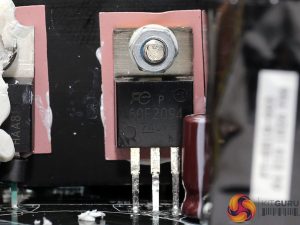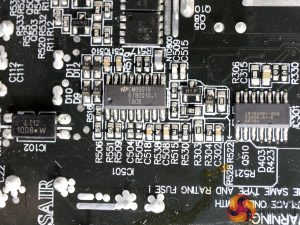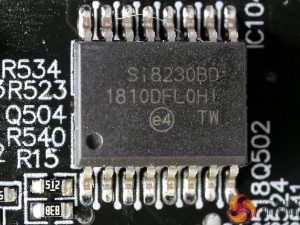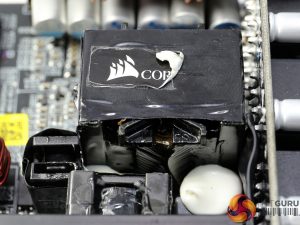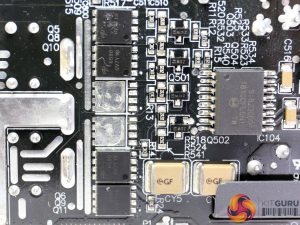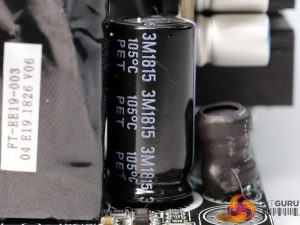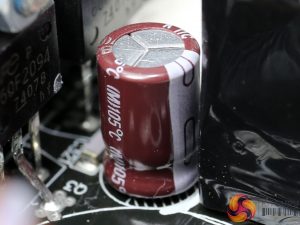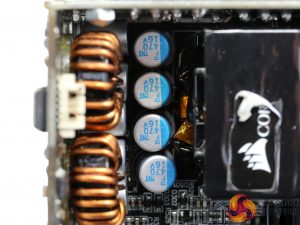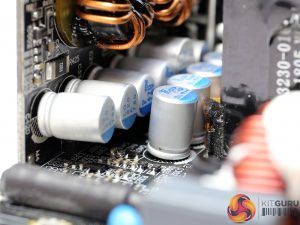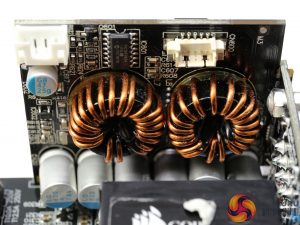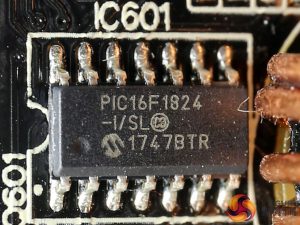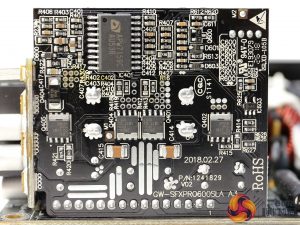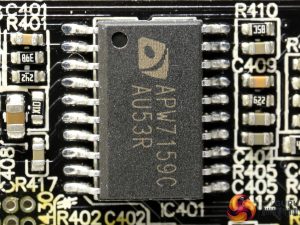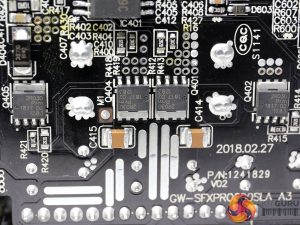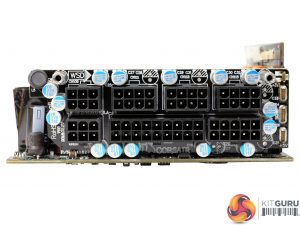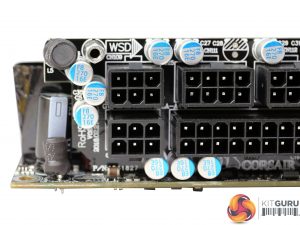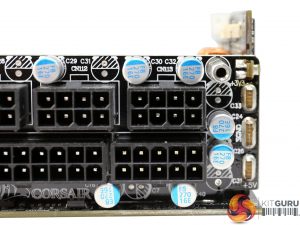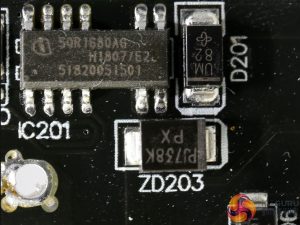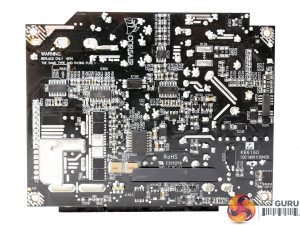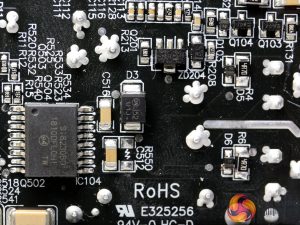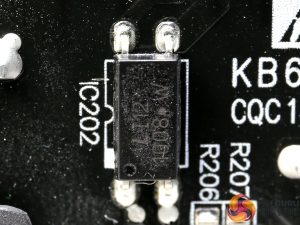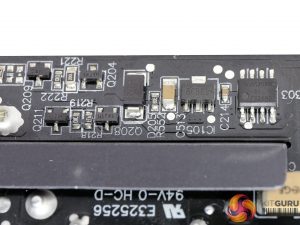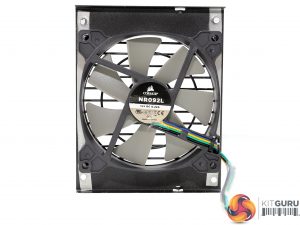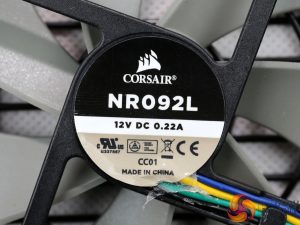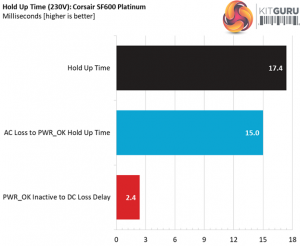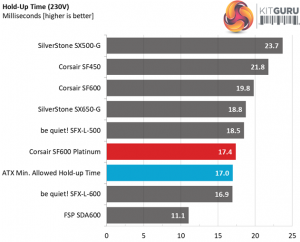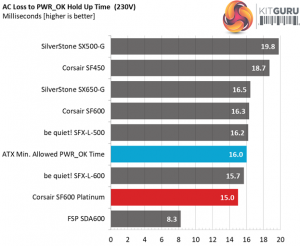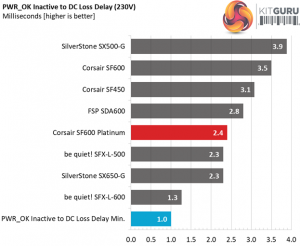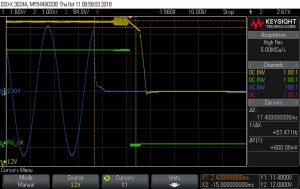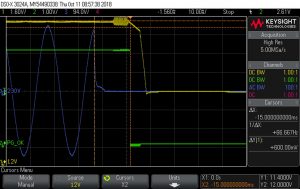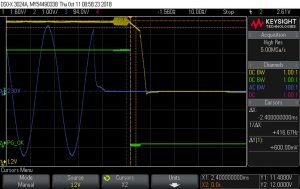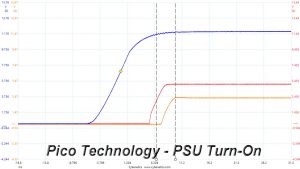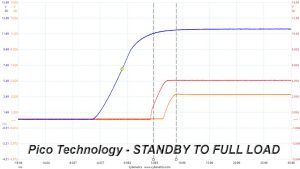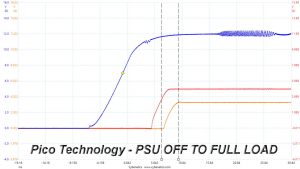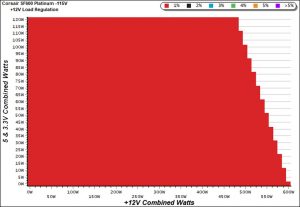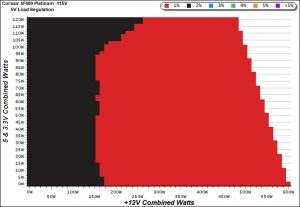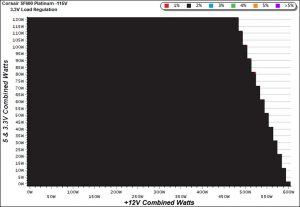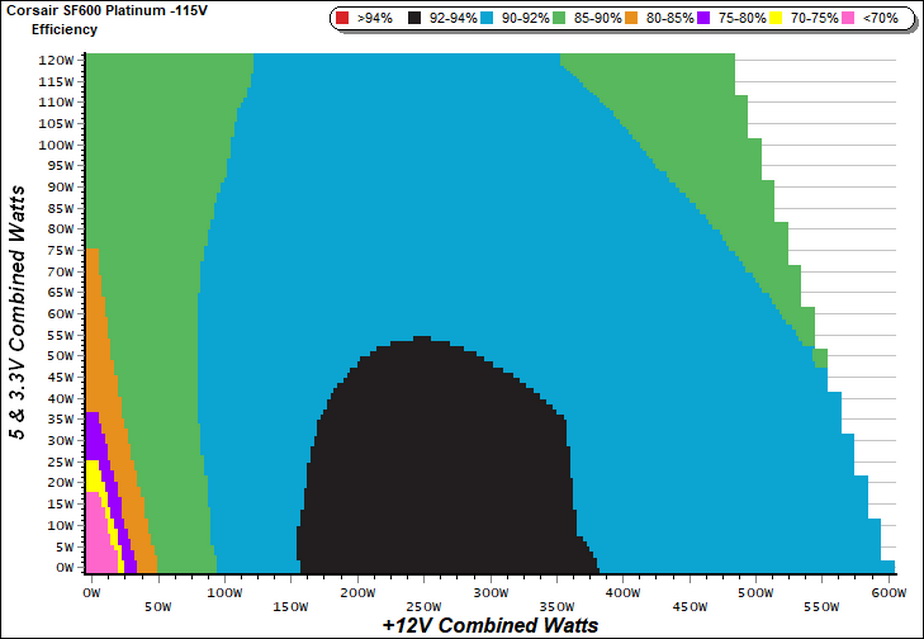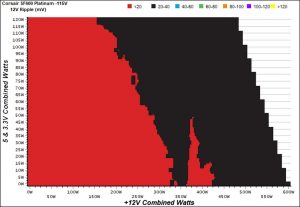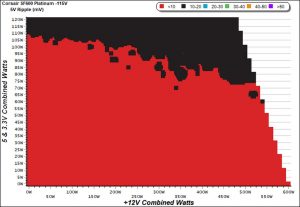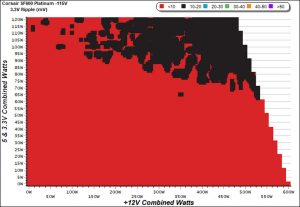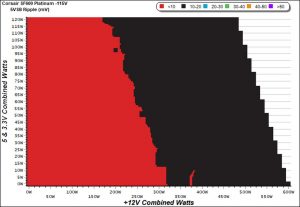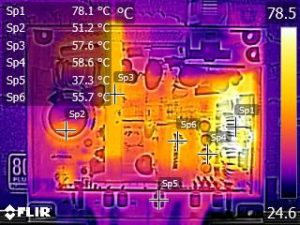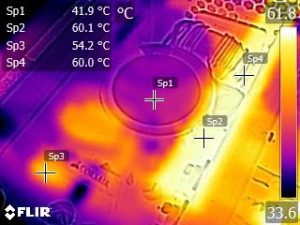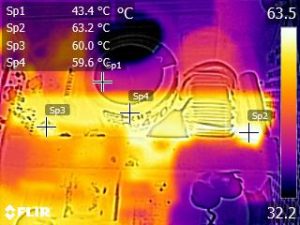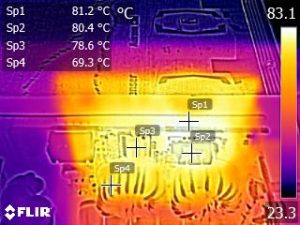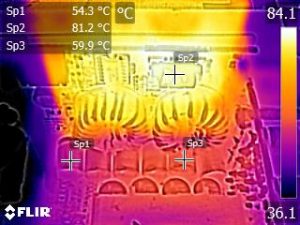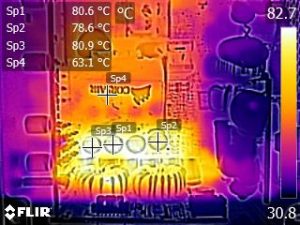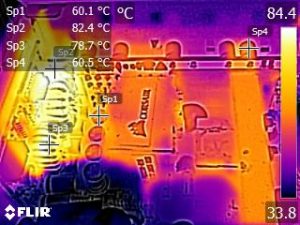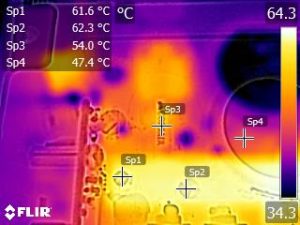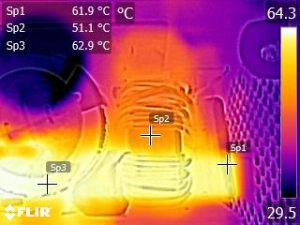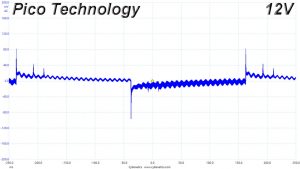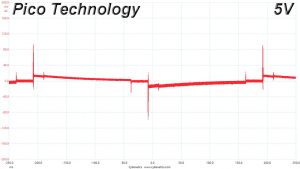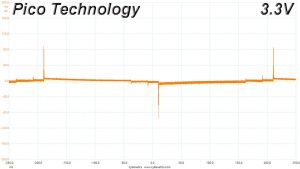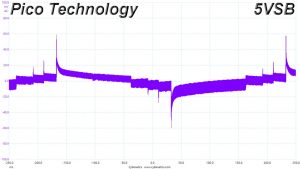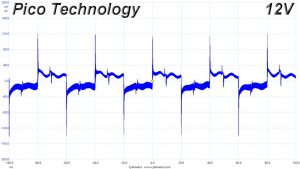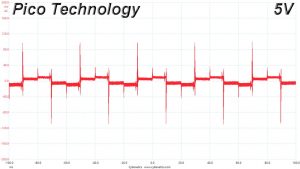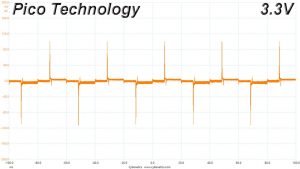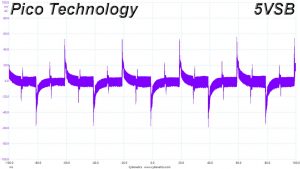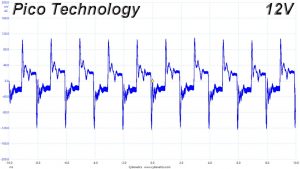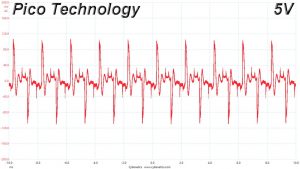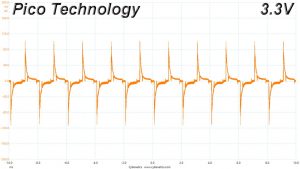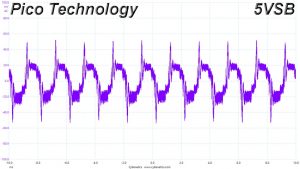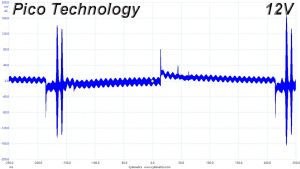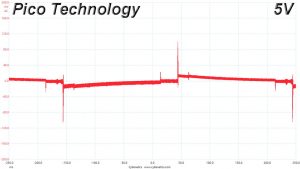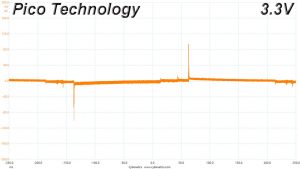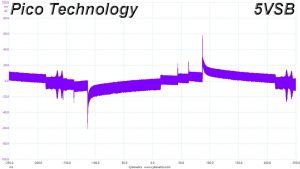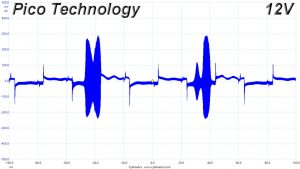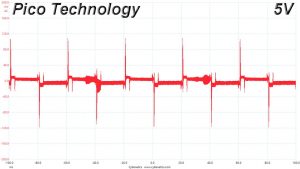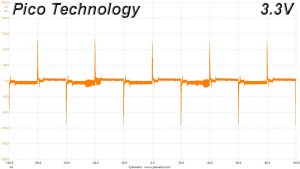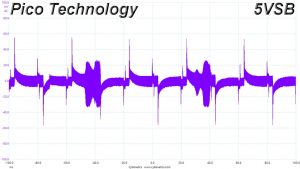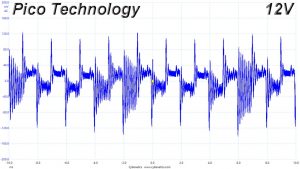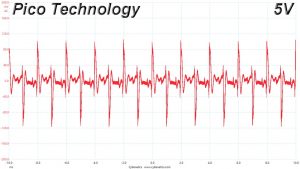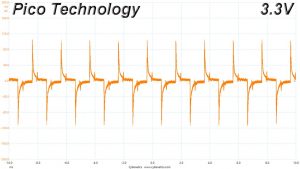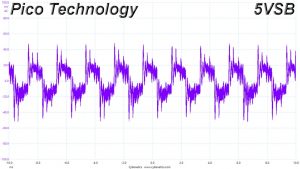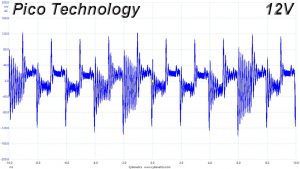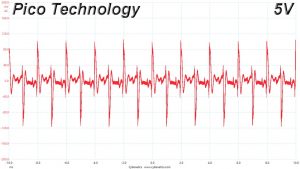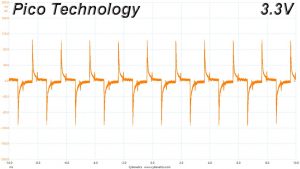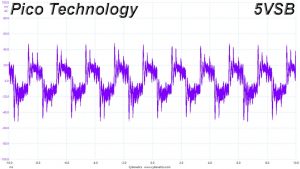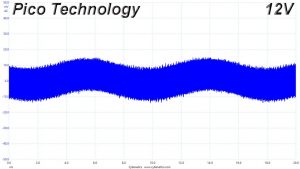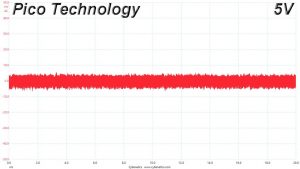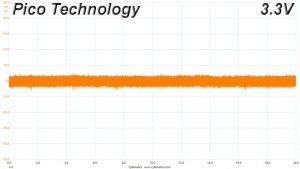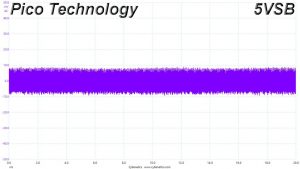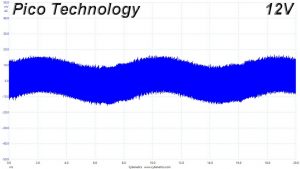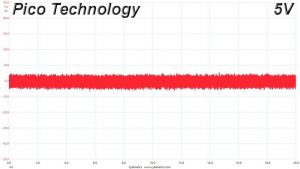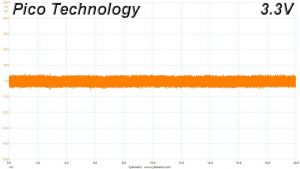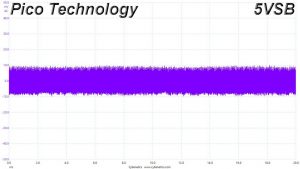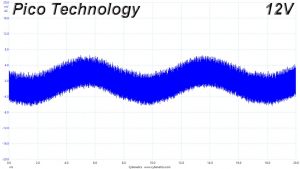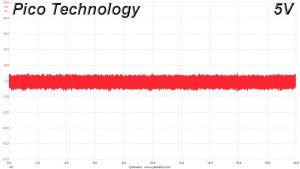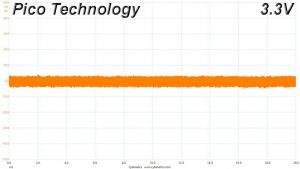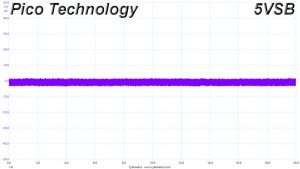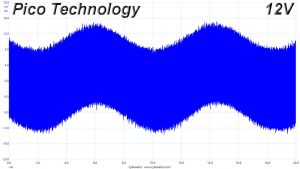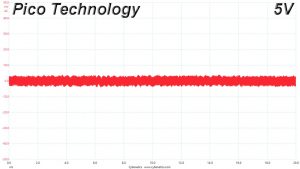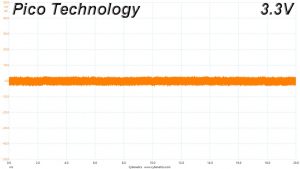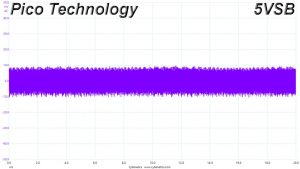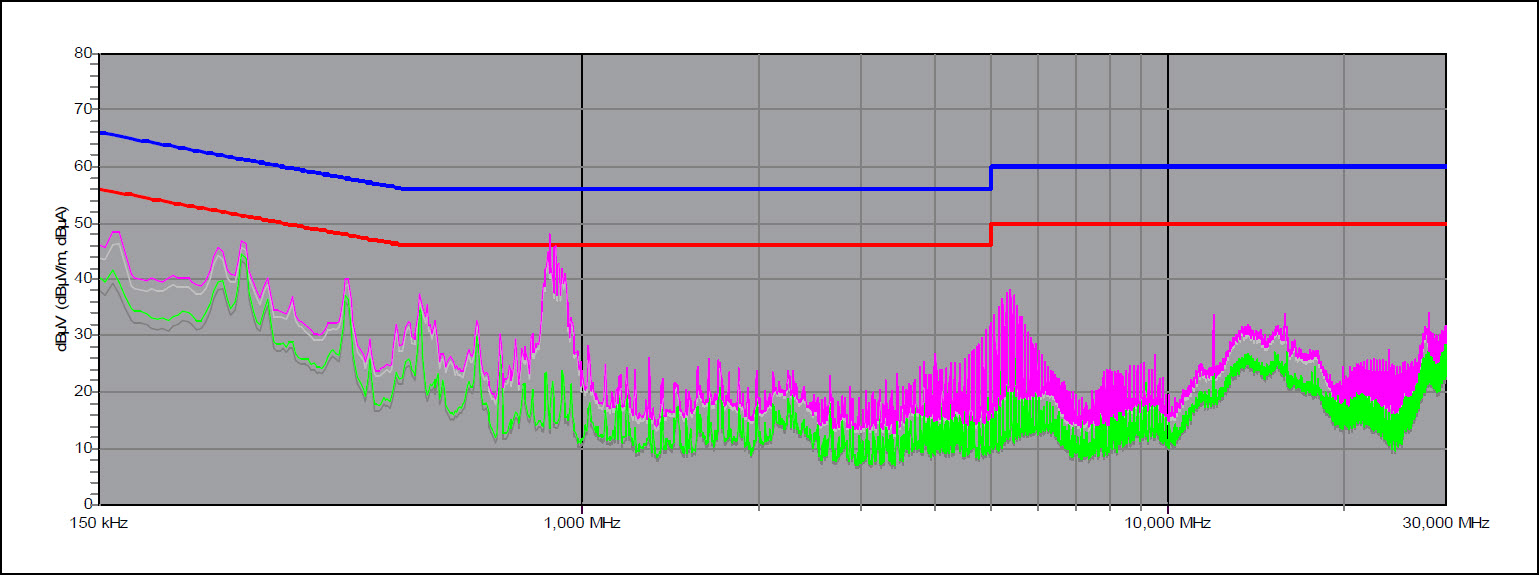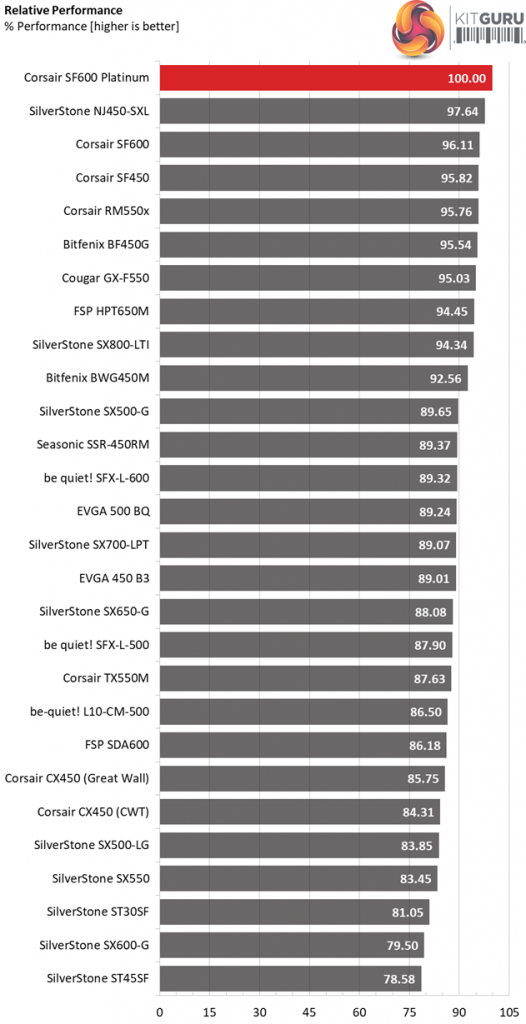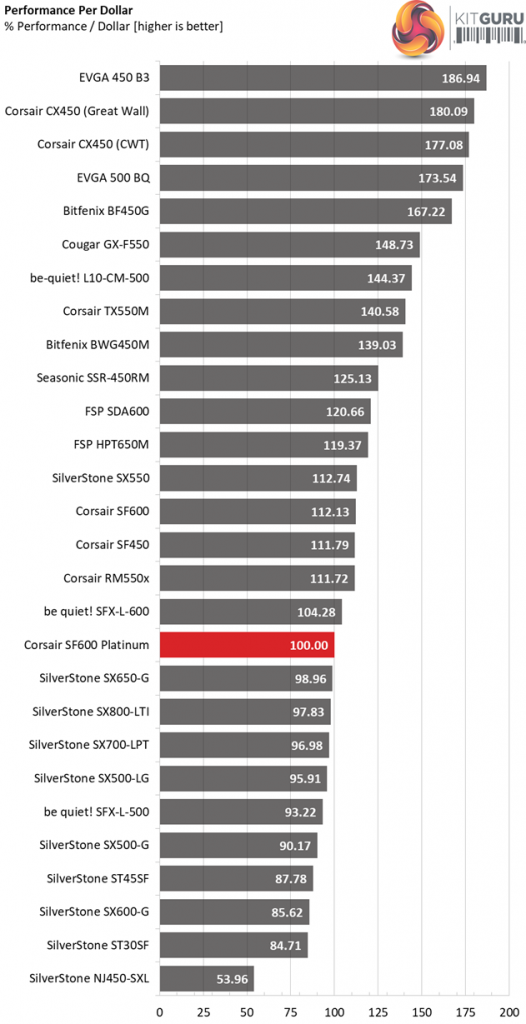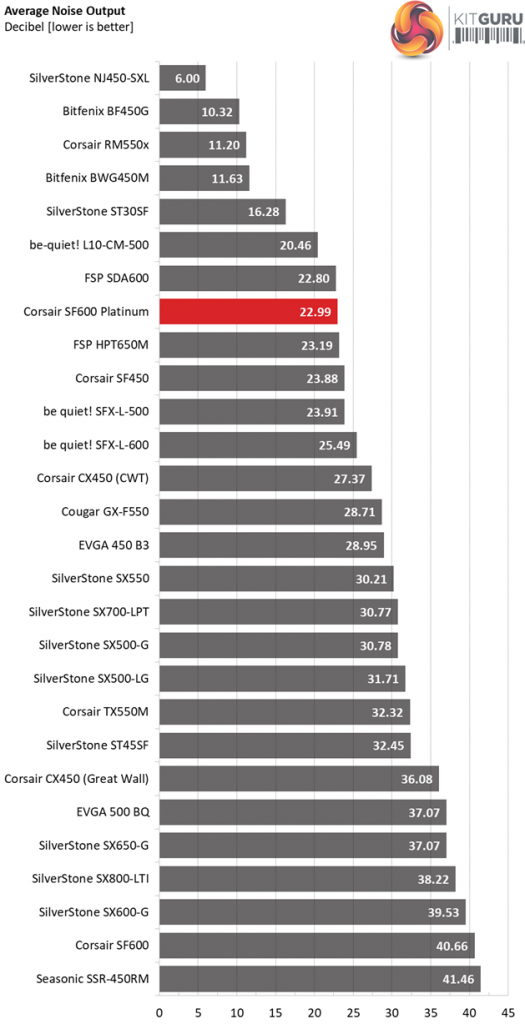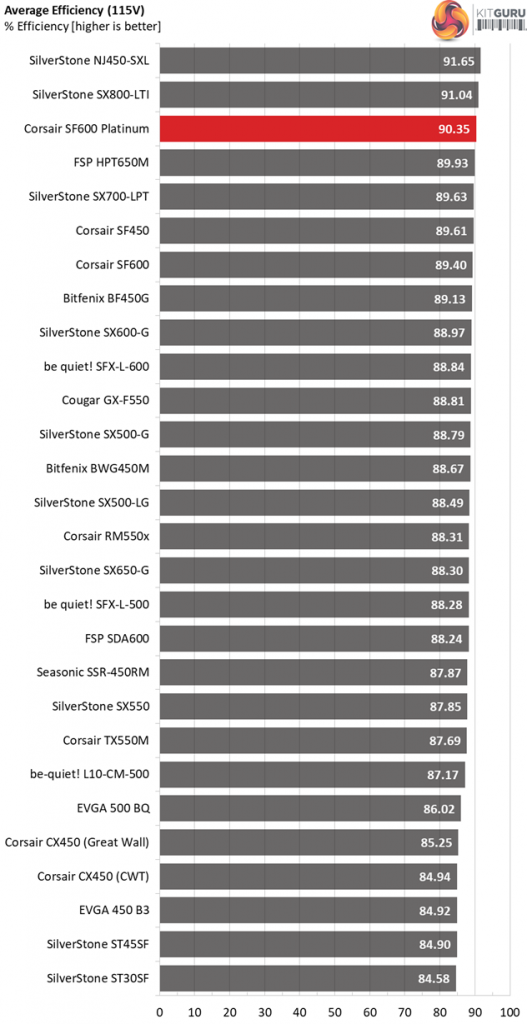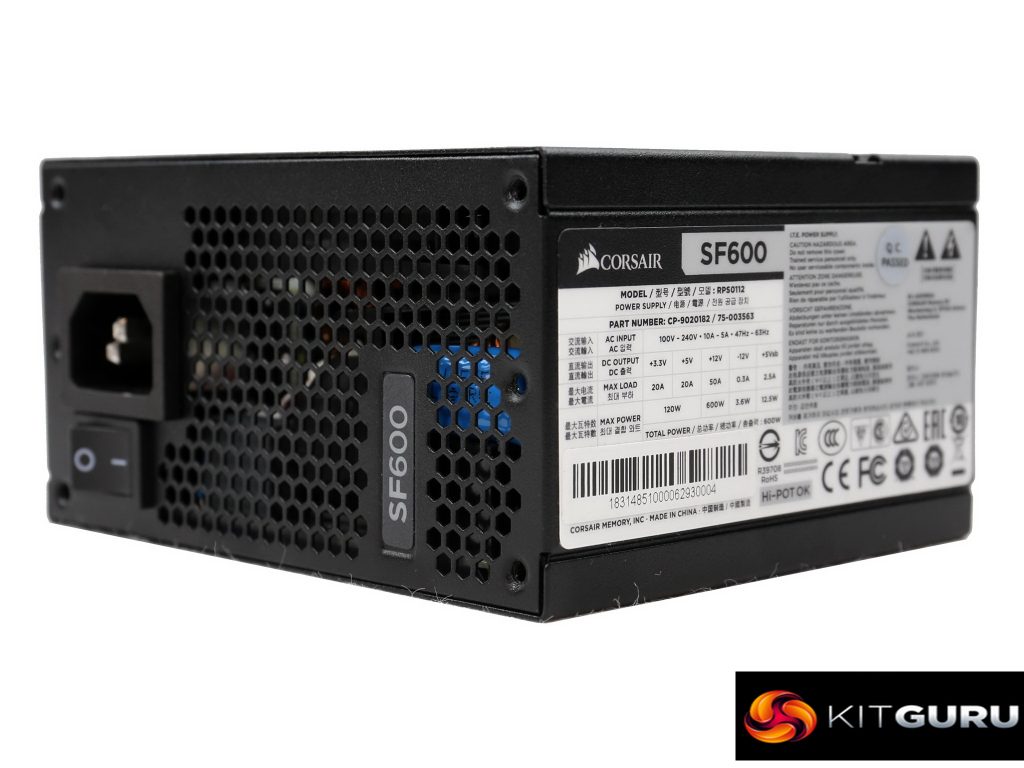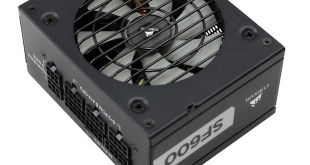
The SF600 Platinum is currently Corsair's flagship SFX model offering a notable efficiency increase compared against the plain SF600. The question is whether it is worth paying a premium price tag to get it or if it would make more sense to opt for the more affordable Gold rated SF600.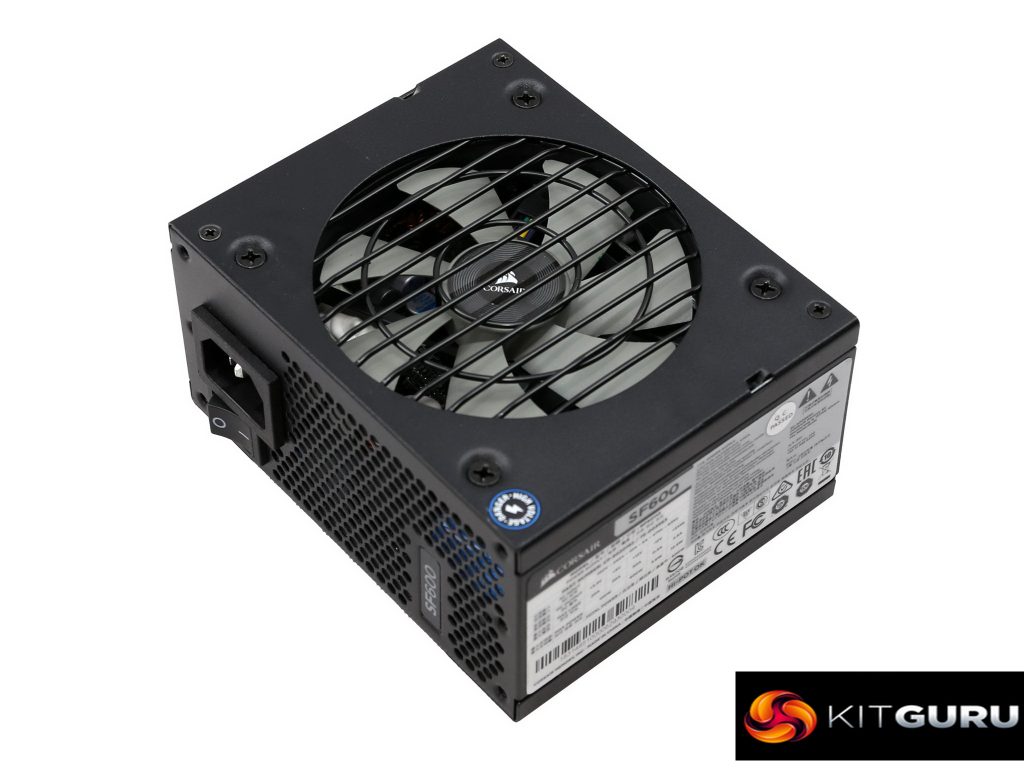
SF Platinum models are manufacturer by Great Wall, the same OEM who helped create the SF Gold units. The latter offer top performance, the best in the respective SFX wattage categories – so improving this platform surely was a difficult task.
The SF600 Platinum will be our main subject today, and in an upcoming next review we will take a look at its smaller 450W brother. Thanks to the 600W capacity this power supply can meet the requirements of a mid-level gaming system, equipped with a single high-end GPU or two mid-level ones along with a capable processor.
Some of the audience reading this might feel that 600W is not a lot of available power for a modern system, however you should take into account that we are talking about an SFX unit, which has much smaller dimensions compared to an ATX power supply.
What matters the most here is the power density score which for the SF600 Platinum is 742W per litre (or 1000 cubic centimeter). In comparison a 1000W PSU with 180mm depth has 431W per litre power density, so as you can see the difference is huge.
Read our How We Test Power Supplies HERE
Specifications
| Manufacturer (OEM) | Great Wall |
| Max. DC Output | 600W |
| Efficiency | 80 PLUS Platinum, ETA-A (88-91%) |
| Noise | LAMBDA-A (20-25 dB[A]) |
| Modular | ✓ (Fully) |
| Intel C6/C7 Power State Support | ✓ |
| Operating Temperature (Continuous Full Load) | 0 – 50°C |
| Over Voltage Protection | ✓ |
| Under Voltage Protection | ✓ |
| Over Power Protection | ✓ |
| Over Current (+12V) Protection | ✓ |
| Over Temperature Protection | ✓ |
| Short Circuit Protection | ✓ |
| Surge Protection | ✓ |
| Inrush Current Protection | ✓ |
| Fan Failure Protection | ✗ |
| No Load Operation | ✓ |
| Cooling | 92mm Rifle Bearing Fan (NR092L) |
| Semi-Passive Operation | ✓ |
| Dimensions (W x H x D) | 122 x 65 x 102mm |
| Weight | 0.874 kg (1.93 lb) |
| Form Factor | SFX, EPS 2.92 |
| Warranty | 7 Years |
The efficiency has been upgraded to 80 PLUS Platinum and in the Cybenetics scale it is ETA-A. When it comes to noise output the unit achieves a LAMBDA-A rating which is fully satisfactory, given the SFX form factor and the 600W capacity.
The continuous output rated temperature is pretty high at 50°C and all necessary protection features are present. The cooling duties are handled by a 92mm rifle bearing fan which is driven by a relaxed speed profile. There is also a semi-passive mode which cannot be deselected though. Finally, the provided warranty is long at seven years. To the best of our knowledge there is no other SFX unit featuring a longer warranty.
Power Specifications
| Rail | 3.3V | 5V | 12V | 5VSB | -12V | |
| Max. Power | Amps | 20 | 20 | 50 | 2.5 | 0.3 |
| Watts | 120 | 600 | 12.5 | 3.6 | ||
| Total Max. Power (W) | 600 | |||||
The minor rails could be at 100W max combined power, since they are not heavily used any more. The main rail is the +12V which in this power supply can deliver up to 600W of power, or 50 Amps. Lastly, the 5VSB rail has the typical amperage which we meet in the majority of PSU's nowadays.
Cables & Connectors
|
Modular Cables
|
||||
|
Description
|
Cable Count
|
Connector Count (Total)
|
Gauge
|
In Cable Capacitors
|
|
ATX connector 20+4 pin (300mm)
|
1
|
1
|
16-18AWG
|
No
|
|
4+4 pin EPS12V (400mm)
|
1
|
1
|
16AWG
|
No
|
|
6+2 pin PCIe (700mm)
|
2
|
2
|
16AWG
|
No
|
|
SATA (100mm+105mm+105mm105mm)
|
1
|
4
|
18AWG
|
No
|
|
4 pin Molex (100mm+105mm+105mm)
|
1
|
3
|
18AWG
|
No
|
|
AC Power Cord (1400mm)
|
1
|
1
|
18AWG
|
–
|
All cables are short, since this PSU is meant for small chassis. Nonetheless, from the moment an SFX-to-ATX bracket is provided, we believe that Corsair should also provide another version of this model featuring longer ATX and EPS cables (the PCIe cables are long enough even for a full tower case), to make it compatible with larger chassis as well. Else the aforementioned bracket has no meaning.
It is nice to see 16AWG gauge cables that do have to handle high loads, however it is a shame to find only a single EPS and two PCIe connectors. This is exactly the same amount with the SF450 Platinum! Actually the SF600 and SF450 Platinum share the same cable configuration and this is odd, given that the latter has 150W less. In our opinion Corsair should equip the SF600 with either two EPS and two PCIe connectors, or one EPS and four PCIe.
The distance between the peripheral connectors is small, but we won't complain since this power supply is for small chassis. It would be nice though to provide at least 120mm clearance between the 4-pin Molex connectors.
All cables are individually sleeved and they don't feature any extra filtering capacitors, which might improve ripple suppression – however most users hate them so we understand Corsair's reasoning.
Packaging
The package is small and we are surprised that Corsair haven't highlighted the Platinum efficiency in big letters on the front of the box. There are two easy ways though to distinguish the plain SF600 from the SF600 Platinum.
The first is the price tag (of course!) and the second is the 80 PLUS certification badge, which is Platinum with the new model and Gold for the older one. We should also note that the plain SF600 and SF450 won't be retired, but will still remain in Corsair's portfolio since they are good alternatives for users who don't want to pay the full price of the platinum siblings.
A small sticker in the bottom right corner shows the model number and the manufacturing country, which is, predictably, China.
A list of the available connectors is provided on this side of the box.
Around the back you will find the power specifications table, the efficiency and noise output curves and a scheme showing the unit's dimensions.
Contents
The power supply is well protected in the box since it is covered by packing foam. It is also stored in a nice velvet bag, featuring Corsair's logo. As usual, all paperwork sits on top of the product.
The bundle includes several zip ties and a Velcro strap, fixing bolts, a case badge, the user's manual, a warranty leaflet and the SFX-to-ATX bracket. The latter allows you to mount the unit into a normal ATX case.
Exterior
This is a tiny power supply since it follows the SFX form factor.
At the front we find the power switch installed below the AC receptacle and unfortunately there is no switch for toggling on/off the semi-passive operation. We want to have the option to deactivate the semi-passive mode in every unit that has it, however apparently not all manufacturers share our opinion in this matter.
The power specifications label covers almost entirely one of the unit's sides.
The modular panel hosts seven sockets, which have legends to guide you through the cable connection. The PCIe and EPS sockets are compatible, meaning that you can connect any of the EPS and PCIe cables to them.
The external design is nicely finished, if a little run of the mill in regards to appearance.
| General Data | |
| Manufacturer (OEM) | Great Wall |
| Primary Side | |
| Transient Filter | 4x Y caps, 2x X caps, 3x CM chokes, 1x MOV |
| Inrush Protection | NTC Thermistor & Relay |
| Bridge Rectifier(s) |
1x GBU25KH (800V, 25A @ 125 °C)
|
| APFC MOSFET |
1x Infineon IPZ60R099C7 (650V, 14A @ 100°C, 0.099Ohm)
|
| APFC Boost Diode |
1x Infineon IDH06G65C6 (600V, 6A @ 145°C)
|
| Hold-up Cap(s) |
1x Nippon Chemi-Con (420V, 470uF, 2000h @ 105 °C, KMZ)
|
| Main Switchers |
2x 60F2094
|
| Driver IC |
Silicon Labs Si8230BD
|
| APFC Controller |
Champion CM6502 & CM03X Green PFC controller
|
| Resonant Controller |
Champion CM6901X
|
| Topology |
Primary side: Half-Bridge & LLC Resonant Controller
Secondary side: Synchronous Rectification & DC-DC converters |
| Secondary Side | |
| +12V MOSFETS | 4x Alpha & Omega AON6590 (40V, 100A @ 100°C, 1.55mOhm) |
| 5V & 3.3V | DC-DC Converters: 4x Nexperia PSMN2R0-30YL (30V, 100A @ 25°C, 2mOhm) PWM Controller: Anpec APW7159C |
| Filtering Capacitors | Electrolytics: Nippon Chemi-Con (4-10,000h @ 105°C, KY), Rubycon (3-6,000h@ 105°C, YXJ) Polymers: Nippon Chemi-Con |
| Supervisor IC | IN1S429I -SCG |
| Fan Control MCU | PIC16F1824 |
| Fan Model | Corsair NR092L (92mm, 12V, 0.22A, 3950 RPM, rifle bearing) |
| 5VSB Circuit | |
| Rectifier |
1x CSD18534 FET (60V, 69A @ 25 °C, 7.8mOhm)
|
| Standby PWM Controller | Infineon ICE5QR1680AG |
The unit's original manufacturer is Great Wall Technology, which was strictly guided by Corsair's engineers. The design is top-notch offering enough clearance for increased airflow while it uses high quality components, to achieve a long lifetime along with good performance.
In the primary side Infineon FETs are used and the medium capacity bulk cap is provided by Chemi-Con, while in the secondary side the +12V FETs are installed on the solder side of the main PCB. Typically a pair of DC-DC converters handle the minor rails and the 5VSB rail uses an advanced PWM controller, for high efficiency and minimized vampire power levels.
The first part of the transient filter is hosted on a small PCB, located right behind the AC receptacle. It consists of two Y and one X caps. There is also a small CM choke there.
The second stage of the EMI/transient filter is on the main PCB including two Y and one X caps, two CM chokes and an MOV. The main fuse is covered in heat shrink tubing.
The single bridge rectifier.
The APFC converter uses a single Infineon IPZ60R099C7 FET and a IDH06G65C6 boost diode, provided by the same manufacturer. The bulk cap is made by Nippon Chemi-Con and belongs to the quality KMZ line. It has enough capacity to offer a longer than 17ms hold-up time.
The supervisor IC, a Champion CM6502, is supported by a CM03AX Green PFC controller.
The primary switching FETs are two 60F2094, arranged into a half-bridge topology. The LLC resonant controller is a Champion CM6901X IC, which is installed on the solder side of the main PCB. Right next to it we find the protections IC, a IN1S429I -SCG for which we couldn't find any information on the internet. Finally, the driver IC for the 60F2094 FETs is a Silicon Labs Si8230BD.
The main transformer. The Corsair sticker is damaged, because we applied a huge thermal load on the entire secondary side with a heat gun, to find the over temperature protection triggering point.
Four Alpha & Omega AON6590 FETs regulate the minor rails. The SF600 Gold uses six of those FETs in the same stage. Apparently Corsair figured that this is an overkill, so they removed a couple of them, reducing also the manufacturing cost. The IC that drives the primary switching FETs is installed close to the +12V FETs.
The filtering caps, both polymer and electrolytics, in the secondary side are provided by Chemi-Con. The only exception is one of the caps that filters the 5VSB rail, which is made by Rubycon.
A PIC16F1824 MCU is used to control the fan speed profile. It is installed on the board that hosts the DC-DC converters for the minor rails.
The unit's DC-DC converters use four Nexperia PSMN2R0-30YL FETs and the common PWM controller is a Anpec APW7159C.
There are lots of polymer filtering caps installed on the modular board.
A Infineon ICE5QR1680AG quasi-resonant controller offers high efficiency in the 5VSB rail, while minimizing at the same time the vampire power.
The soldering quality is very good and all component leads are carefully trimmed.
The cooling fan is the same used in the Gold certified SF600. Its model number is NR092L, it measures 92mm in diameter and it has a rifle bearing. The semi-passive operation will take some burden from the fan, allowing for a higher lifetime.
To learn more about our PSU tests and methodology, please check out How We Test Power Supply Units.
Primary Rails And 5VSB Load Regulation
Load Regulation testing is detailed here.
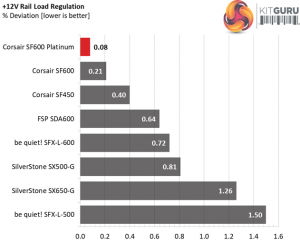
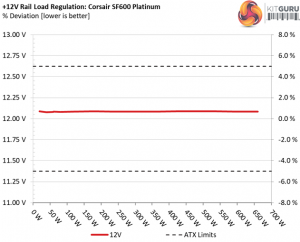
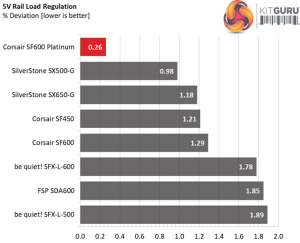
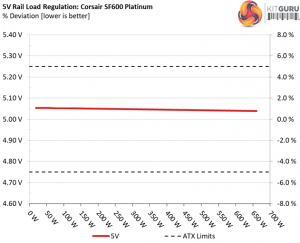
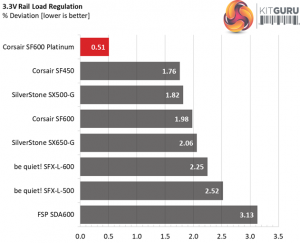
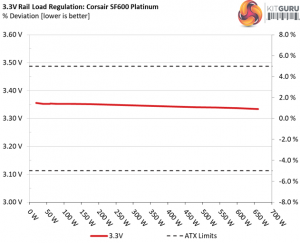
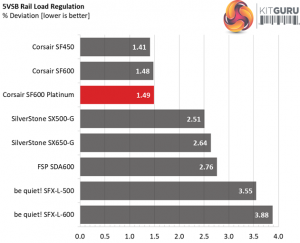
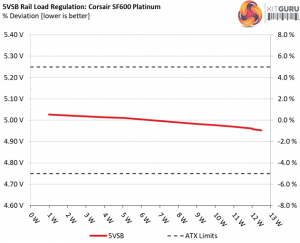
Hold-Up Time
Our hold-up time tests are described in detail here.
The oscilloscope screenshots that we took during the hold-up time measurements:
The hold-up time is over 17ms and the power ok signal is accurate, yet lower than 16ms. The main problem here is the high voltage overshoot at +12V right before the power ok signal drops to zero. This is a short period but the +12V oscillations are notable. Nonetheless, the ATX spec allows for up to 10% above the nominal voltage, meaning 13.2V, and in this case clearly the +12V rail doesn't even go close to that.
Inrush Current
For details on our inrush current testing, please click here.
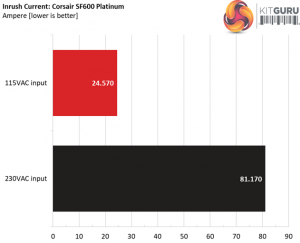
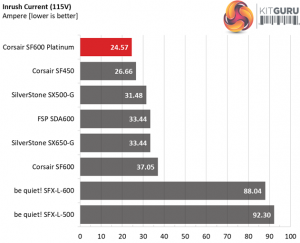
The inrush current with 115V is low. With 230V we get a high reading though.
Load Regulation And Efficiency Measurements
The first set of tests reveals the stability of the voltage rails and the units’s efficiency. The applied load equals (approximately) 10 to 110 percent of the power supplies maximum load in increments of 10 percentage points.
We conducted two additional tests.
During the first, we stressed the two minor rails (5V and 3.3V) with a high load, while the load at +12V was only 0.1A. This test reveals whether a power supply is compatible with Intel’s C6/C7 sleep states or not. In the second test, we determined the maximum load the +12V rail could handle with minimal load on the minor rails.
| Test # | 12V | 5V | 3.3V | 5VSB | DC/AC (Watts) | Efficiency | Fan Speed (RPM) | PSU Noise (dB[A]) | Temps (In/Out) | PF/AC Volts |
| 1 | 3.185A | 1.980A | 1.966A | 0.998A | 60.090 | 86.236% | 0 | <6.0 | 43.89°C | 0.960 |
| 12.085V | 5.053V | 3.354V | 5.011V | 69.681 | 40.16°C | 115.06V | ||||
| 2 | 7.354A | 2.969A | 2.952A | 1.199A | 119.767 | 90.292% | 0 | <6.0 | 44.75°C | 0.959 |
| 12.085V | 5.052V | 3.352V | 5.004V | 132.644 | 40.73°C | 115.06V | ||||
| 3 | 11.886A | 3.467A | 3.432A | 1.401A | 179.676 | 91.603% | 0 | <6.0 | 46.15°C | 0.975 |
| 12.087V | 5.050V | 3.351V | 4.997V | 196.146 | 41.53°C | 115.05V | ||||
| 4 | 16.423A | 3.960A | 3.941A | 1.603A | 239.680 | 92.001% | 1369 | 15.3 | 41.71°C | 0.984 |
| 12.086V | 5.049V | 3.349V | 4.990V | 260.518 | 46.84°C | 115.05V | ||||
| 5 | 20.625A | 4.955A | 4.931A | 1.806A | 299.769 | 92.019% | 1372 | 15.3 | 42.20°C | 0.989 |
| 12.085V | 5.048V | 3.347V | 4.983V | 325.767 | 47.68°C | 115.05V | ||||
| 6 | 24.827A | 5.946A | 5.920A | 2.010A | 359.866 | 91.799% | 1518 | 18.7 | 42.69°C | 0.992 |
| 12.086V | 5.046V | 3.345V | 4.976V | 392.017 | 48.89°C | 115.05V | ||||
| 7 | 28.993A | 6.939A | 6.910A | 2.214A | 419.576 | 91.039% | 1700 | 21.7 | 43.19°C | 0.993 |
| 12.088V | 5.045V | 3.343V | 4.969V | 460.874 | 50.55°C | 115.05V | ||||
| 8 | 33.230A | 7.933A | 7.902A | 2.419A | 480.092 | 90.549% | 1963 | 25.7 | 43.75°C | 0.994 |
| 12.088V | 5.043V | 3.341V | 4.961V | 530.200 | 51.53°C | 115.04V | ||||
| 9 | 37.798A | 8.432A | 8.385A | 2.421A | 539.418 | 90.064% | 2436 | 32.2 | 44.25°C | 0.995 |
| 12.088V | 5.042V | 3.339V | 4.958V | 598.930 | 52.32°C | 115.04V | ||||
| 10 | 42.438A | 8.930A | 8.900A | 2.525A | 600.116 | 89.455% | 2968 | 37.6 | 45.02°C | 0.996 |
| 12.086V | 5.040V | 3.337V | 4.952V | 670.861 | 53.62°C | 115.04V | ||||
| 11 | 47.408A | 8.933A | 8.908A | 2.526A | 660.140 | 88.860% | 3358 | 40.4 | 46.55°C | 0.996 |
| 12.085V | 5.039V | 3.334V | 4.949V | 742.897 | 55.93°C | 115.04V | ||||
| CL1 | 0.139A | 14.003A | 14.000A | 0.000A | 119.409 | 86.133% | 1076 | 9.0 | 42.05°C | 0.962 |
| 12.102V | 5.054V | 3.354V | 5.014V | 138.633 | 47.90°C | 115.06V | ||||
| CL2 | 50.010A | 1.002A | 0.998A | 1.000A | 617.884 | 90.002% | 2896 | 36.4 | 45.00°C | 0.996 |
| 12.088V | 5.039V | 3.338V | 4.982V | 686.525 | 53.37°C | 115.04V |
The load regulation at +12V is super tight, while on the minor rails is among the best we have measured in a SFX unit. Great Wall did a marvelous job in this platform under Corsair's strict guidance of course, since for quite some time now Jon Gerow (aka Jonnyguru) is Corsair's director of PSU engineering.
The unit easily meets the 80 PLUS Platinum requirements even under sky high operating temperatures, which apply a far heavier stress on a small form factor PSU, compared to an ATX one.
Despite the higher than 40°C ambient, the fan doesn't spin during the first three tests, while it operates at very low speeds till the 90% load test. We have to push this product beyond its limits to make the fan rotate at its full speed, where the output noise barely exceeds 40 dB(A). All in all, the fan speed profile is highly relaxed.
Efficiency
Our efficiency testing procedure is detailed here.
Using results from the previous page, we plotted a chart showing the efficiency of the SF600 Platinum at low loads, and loads from 10 to 110 percent of its maximum-rated capacity.
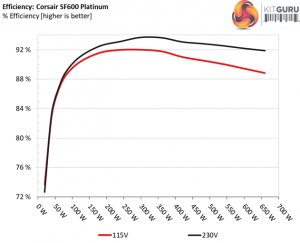
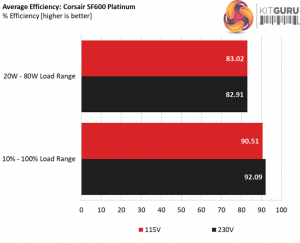
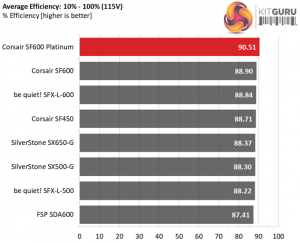
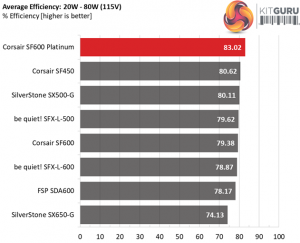
The SF600 Platinum achieves amazing efficiency levels under both light and normal loads. It is nice to see a platform featuring high efficiency along with tight load regulation since in some cases the engineers have to sacrifice a percentage of load regulation, in order to increase efficiency.
Efficiency At Low Loads
In the following tests, we measure the efficiency of the SF600 Platinum at loads significantly lower than 10 percent of its maximum capacity (the lowest load the 80 PLUS standard measures). The loads we dial are 20, 40, 60, and 80W. This is important for representing when a PC is idle, with power-saving features turned on.
| Test # | 12V | 5V | 3.3V | 5VSB | DC/AC (Watts) | Efficiency | Fan Speed (RPM) | PSU Noise (dB[A]) | PF/AC Volts |
| 1 | 1.197A | 0.495A | 0.476A | 0.199A | 19.568 | 73.730% | 0 | <6.0 | 0.834 |
| 12.088V | 5.054V | 3.356V | 5.027V | 26.540 | 115.06V | ||||
| 2 | 2.462A | 0.990A | 0.986A | 0.398A | 40.043 | 83.180% | 0 | <6.0 | 0.912 |
| 12.078V | 5.053V | 3.353V | 5.022V | 48.140 | 115.06V | ||||
| 3 | 3.652A | 1.484A | 1.461A | 5.018A | 59.511 | 86.659% | 0 | <6.0 | 0.960 |
| 12.079V | 5.053V | 3.353V | 5.018V | 68.673 | 115.07V | ||||
| 4 | 4.909A | 1.980A | 1.970A | 0.798A | 79.910 | 88.494% | 0 | <6.0 | 0.953 |
| 12.080V | 5.052V | 3.353V | 5.013V | 90.300 | 115.06V |
Under light loads we measure high efficiency, with the power supply operating in passive mode throughout all tests.
5VSB Efficiency
The ATX specification (revision 1.4), along with CEC, ErP Lot 3 2014 and ErP Lot 6 2010/2013, states that the 5VSB standby supply efficiency should be as high as possible, recommending 75 percent or higher with 550mA, 1A, and 1.5A of load.
The supply should also achieve higher than 75% efficiency at 5VSB under full load, or with 3A if its max current output on this rail is higher than 3A.
We take six measurements: one each at 100, 250, 550, 1000, and 1500mA, and one with the full load the 5VSB rail can handle.
| Test # | 5VSB | DC/AC (Watts) |
Efficiency | PF/AC Volts |
| 1 | 0.100A | 0.504 | 71.693% | 0.099 |
| 5.031V | 0.703 | 115.06V | ||
| 2 | 0.250A | 1.258 | 80.076% | 0.196 |
| 5.029V | 1.571 | 115.06V | ||
| 3 | 0.550A | 2.764 | 85.072% | 0.310 |
| 5.024V | 3.249 | 115.06V | ||
| 4 | 1.000A | 5.018 | 84.993% | 0.391 |
| 5.017V | 5.904 | 115.06V | ||
| 5 | 1.500A | 7.515 | 83.891% | 0.435 |
| 5.009V | 8.958 | 115.06V | ||
| 6 | 2.500A | 12.485 | 83.910% | 0.473 |
| 4.993V | 14.879 | 115.06V |
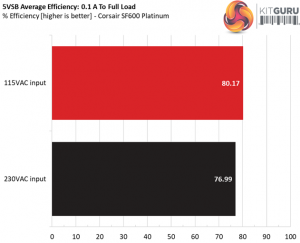
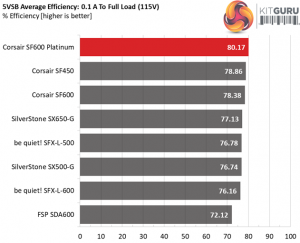
The 5VSB rail is among the best we have encountered so far. Besides good load regulation it also achieves sky high efficiency levels.
Power Consumption In Idle And Standby
In the table below, you’ll find the power consumption and voltage values of all rails (except -12V) when the PSU is idle (powered on, but without any load on its rails), and the power consumption when the unit is in standby mode (without any load, at 5VSB).
| Mode | 12V | 5V | 3.3V | 5VSB | Watts | PF/AC Volts |
| Idle | 12.062V | 5.051V | 3.349V | 5.032V | 7.094 | 0.475 |
| 115.1V | ||||||
| Standby | 0.049 | 0.007 | ||||
| 115.1V | ||||||
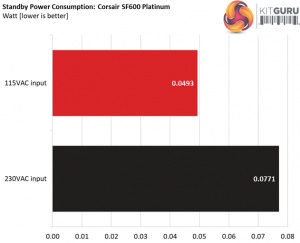
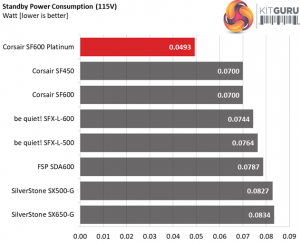
The vampire power levels are kept low, and this plays a key role in the 5VSB rail's efficiency under light loads.
Fan RPM, Delta Temperature, And Output Noise
Our mixed noise testing is described in detail here.
The first chart below illustrates the cooling fan's speed (in RPM), and the delta between input and output temperature. The results were obtained at 37°C (98.6°F) to 47°C (116.6°F) ambient temperature.
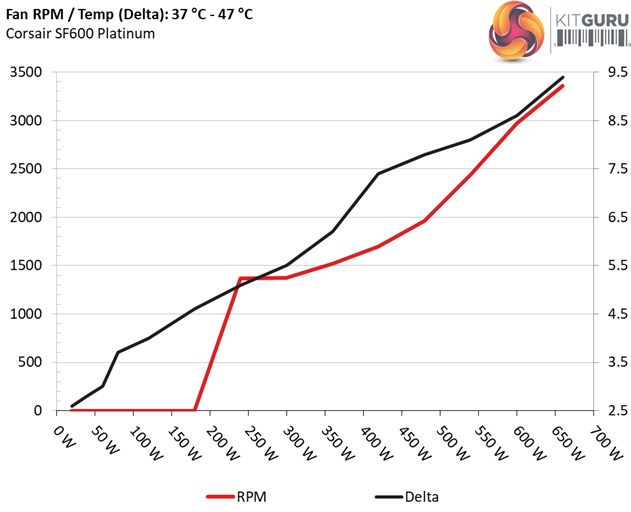
The next chart shows the cooling fan's speed (again, in RPM) and output noise. We measure acoustics from one meter away, inside a hemi-anechoic chamber. Background noise inside the chamber is below 6 dB(A) during testing (it's actually much lower, but our sound meter’s microphone hits its floor), and the results are obtained with the PSU operating at 37°C (98.6°F) to 47°C (116.6°F) ambient temperature.
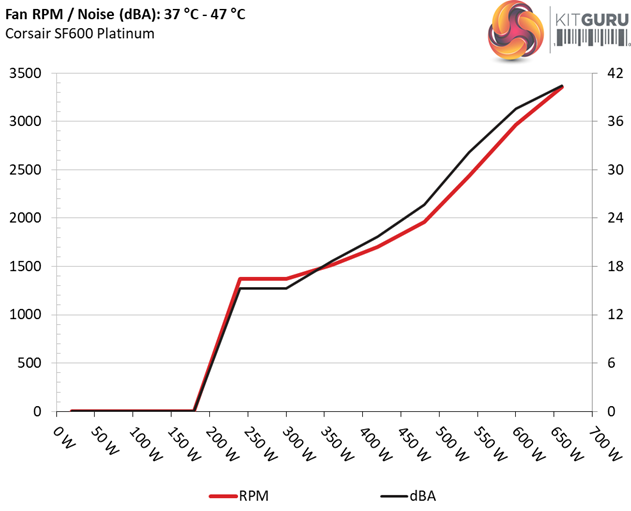
The following graph illustrates the fan's output noise over the PSU's operating range. The same conditions of the above graph apply to our measurements, though the ambient temperature is between 30°C (86°F) to 32°C (89.6°F).
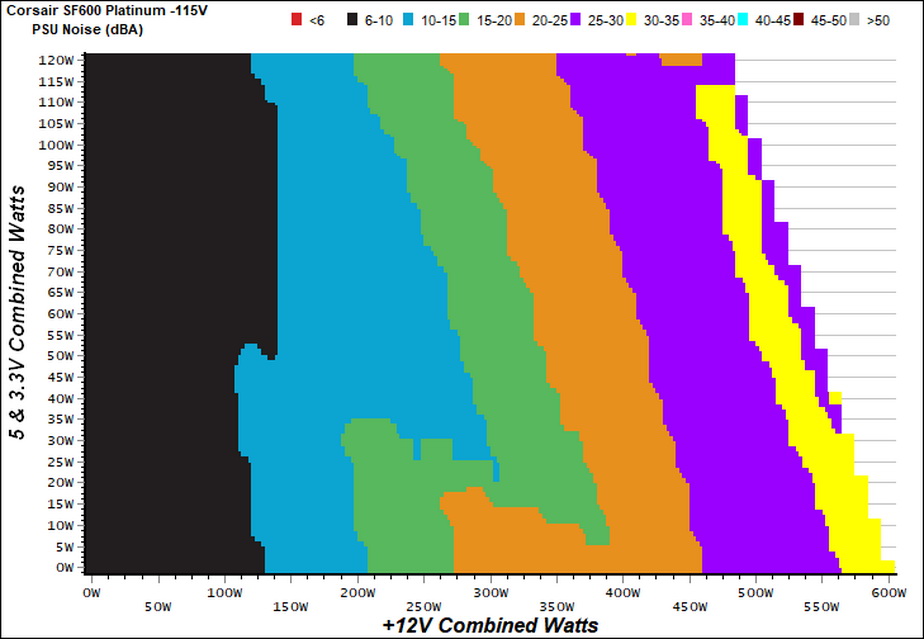
The semi-passive mode doesn't last long, however you should keep in mind that this is a SFX unit so it is much harder to retain the passive operation. The good news is that for most of the time the fan spins at low speeds, producing equally noise output. Even with close to the max rated output the noise stays below 35 dB(A).
Protection Features
Our protection features evaluation methodology is described in detail here.
|
Protection Features |
|
|
OCP |
12V: 66.2A (132.4%), 12.033V |
|
OPP |
810.1W (135.02%) |
|
OTP |
✓ (140°C @ Secondary Side) |
|
SCP |
12V: ✓ |
|
PWR_OK |
Proper Operation |
|
NLO |
✓ |
|
SIP |
Surge: MOV |
The OCP triggering points on almost all rails are ideally set at close to 130%, with only the 3.3V rail exceeding 140%. The over power protection is at 135% which is a bit high, but this platform is solid so most likely there won't be any issues, even under very high operating temperatures.
The over temperature protection is present and working well, while there is short circuit protection on all rails. Finally, the power ok signal is accurate and there is surge and inrush current protection. In general this is a well protected platform.
DC Power Sequencing
According to Intel’s most recent Power Supply Design Guide (revision 1.4) the +12V and 5V voltages must be equal or greater than the 3.3V rail output at all times, during the power-up and normal operation. For our first measurement, we turn the unit off and switch it back on without any load in any of the rails.
In the second test, we set the PSU to standby mode, dial full load and start it afterwards. In the last test, while the power supply is completely switched off (we cut off the power or switch the supply off through its power switch), we dial full load before restoring power.
As expected from a high-end PSU like this one, no problems during the DC power sequencing tests. There is a voltage overshoot at +12V though, but it doesn't affect in any way the outcome of those tests.
Our cross-load tests are described in detail here.
To generate the following charts, we set our loaders to auto mode through our custom-made software before trying more than 1500 possible load combinations with the +12V, 5V, and 3.3V rails. The load regulation deviations in each of the charts below are calculated by taking the nominal values of the rails (12V, 5V, and 3.3V) as point zero. The ambient temperature is between at 30°C (86°F) to 32°C (89.6°F).
Load Regulation Charts
Efficiency Chart
From 160W to 390W load at +12V, and with the minor rails staying below 55W the efficiency levels exceed 92%. For a quite large operating range, marked with blue color, the unit's efficiency is in the 90-92% region.
Ripple Charts
Infrared Images
We apply half-load for 10 minutes with the PSU’s top cover and cooling fan removed before taking photos with our modified FLIR E4 camera that delivers 320×240 IR resolution (76,800 pixels).
The temperatures stay low, although we pushed the minor rails hard. So it doesn't come as a surprise that we measure higher temperatures on the voltage regulation modules, used for the generation of the minor rails.
Advanced Transient Response Tests
For details on our transient response testing, please click here.
These tests are crucial because they simulate the transient loads a PSU is likely to handle (such as booting a RAID array or an instant 100 percent load of CPU/GPUs). We call these “Advanced Transient Response Tests” and they are designed to be very tough to master, especially for a PSU with a capacity of less than 500W.
In all of the tests, we use an oscilloscope to measure the voltage drops caused by the transient load. The voltages should remain within the ATX specification's regulation limits.
We should note that the ATX spec requires for capacitive loading during the transient rests, but in our methodology we chose to apply the worst case scenario with no extra capacitance on the rails.
Advanced Transient Response at 20 Percent – 200ms
| Voltage | Before | After | Change | Pass/Fail |
|---|---|---|---|---|
| 12V | 12.087V | 11.990V | 0.80% | Pass |
| 5V | 5.051V | 4.951V | 1.98% | Pass |
| 3.3V | 3.352V | 3.258V | 2.80% | Pass |
| 5VSB | 5.004V | 4.942V | 1.24% | Pass |
Advanced Transient Response at 20 Percent – 20ms
| Voltage | Before | After | Change | Pass/Fail |
|---|---|---|---|---|
| 12V | 12.083V | 11.941V | 1.18% | Pass |
| 5V | 5.051V | 4.941V | 2.18% | Pass |
| 3.3V | 3.351V | 3.238V | 3.37% | Pass |
| 5VSB | 5.004V | 4.945V | 1.18% | Pass |
Advanced Transient Response at 20 Percent – 1ms
| Voltage | Before | After | Change | Pass/Fail |
|---|---|---|---|---|
| 12V | 12.083V | 11.957V | 1.04% | Pass |
| 5V | 5.051V | 4.941V | 2.18% | Pass |
| 3.3V | 3.351V | 3.237V | 3.40% | Pass |
| 5VSB | 5.004V | 4.949V | 1.10% | Pass |
Advanced Transient Response at 50 Percent – 200ms
| Voltage | Before | After | Change | Pass/Fail |
|---|---|---|---|---|
| 12V | 12.077V | 11.915V | 1.34% | Pass |
| 5V | 5.047V | 4.942V | 2.08% | Pass |
| 3.3V | 3.345V | 3.245V | 2.99% | Pass |
| 5VSB | 4.984V | 4.922V | 1.24% | Pass |
Advanced Transient Response at 50 Percent – 20ms
| Voltage | Before | After | Change | Pass/Fail |
|---|---|---|---|---|
| 12V | 12.075V | 11.833V | 2.00% | Pass |
| 5V | 5.047V | 4.927V | 2.38% | Pass |
| 3.3V | 3.345V | 3.231V | 3.41% | Pass |
| 5VSB | 4.984V | 4.921V | 1.26% | Pass |
Advanced Transient Response at 50 Percent – 1ms
| Voltage | Before | After | Change | Pass/Fail |
|---|---|---|---|---|
| 12V | 12.075V | 11.935V | 1.16% | Pass |
| 5V | 5.046V | 4.928V | 2.34% | Pass |
| 3.3V | 3.344V | 3.229V | 3.44% | Pass |
| 5VSB | 4.984V | 4.932V | 1.04% | Pass |
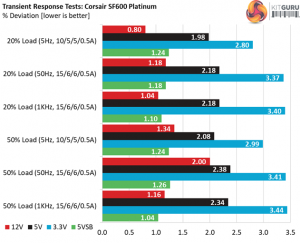
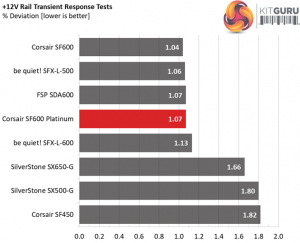
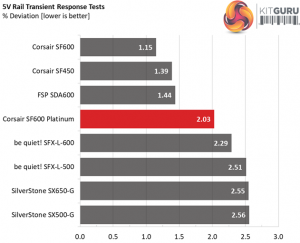
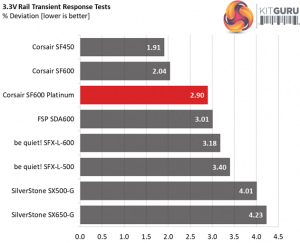
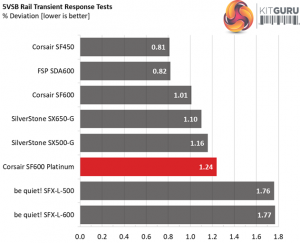
The transient response is good at +12V, for the standards of the SFX category, and quite good on the rest rails. Nonetheless, the gold SF600 unit registers lower deviations on the minor rails.
Here are the oscilloscope screenshots we took during Advanced Transient Response Testing:
Transient Response At 20 Percent Load – 200ms
Transient Response At 20 Percent Load – 20ms
Transient Response At 20 Percent Load – 1ms
Transient Response At 50 Percent Load – 200ms
Transient Response At 50 Percent Load – 20ms
Transient Response At 50 Percent Load – 1ms
Turn-On Transient Tests
In the next set of tests, we measure the unit’s response in simpler transient load scenarios—during its power-on phase.
For our first measurement, we turn the PSU off, dial in the maximum current the 5VSB rail can handle, and switch the PSU back on.
In the second test, we dial the maximum load the +12V rail can handle and start the PSU while it is in standby mode. In the last test, while the PSU is completely switched off (we cut off the power or switch the PSU off through its power switch), we dial the maximum load the +12V rail can handle before restoring power. The ATX specification states that recorded spikes on all rails should not exceed 10 percent of their nominal values (+10 percent for 12V is 13.2V, and 5.5V for 5V).
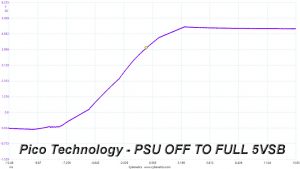
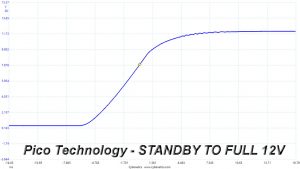
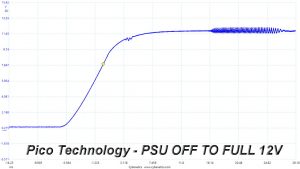
There are no notable spikes and voltage overshoots during the first two tests, however in the last test we notice a region with increased ripple at +12V.
To learn how we measure ripple, please click here.
The following table includes the ripple levels we measured on the rails of the SF600 Platinum. The limits, according to the ATX specification, are 120mV (+12V) and 50mV (5V, 3.3V, and 5VSB).
| Test | 12V | 5V | 3.3V | 5VSB | Pass/Fail |
| 10% Load | 6.2 mV | 5.8 mV | 4.2 mV | 10.0 mV | Pass |
| 20% Load | 9.9 mV | 6.6 mV | 4.9 mV | 12.1 mV | Pass |
| 30% Load | 12.5 mV | 7.0 mV | 5.5 mV | 12.8 mV | Pass |
| 40% Load | 15.2 mV | 7.4 mV | 5.9 mV | 12.6 mV | Pass |
| 50% Load | 19.4 mV | 8.6 mV | 7.1 mV | 12.7 mV | Pass |
| 60% Load | 23.9 mV | 9.4 mV | 7.9 mV | 13.7 mV | Pass |
| 70% Load | 22.5 mV | 9.9 mV | 8.2 mV | 13.7 mV | Pass |
| 80% Load | 25.2 mV | 10.8 mV | 9.2 mV | 15.5 mV | Pass |
| 90% Load | 27.1 mV | 11.3 mV | 9.9 mV | 17.1 mV | Pass |
| 100% Load | 31.2 mV | 12.7 mV | 11.4 mV | 19.1 mV | Pass |
| 110% Load | 33.5 mV | 13.4 mV | 11.5 mV | 20.7 mV | Pass |
| Crossload 1 | 13.5 mV | 12.9 mV | 10.9 mV | 6.3 mV | Pass |
| Crossload 2 | 30.2 mV | 9.1 mV | 7.4 mV | 21.0 mV | Pass |
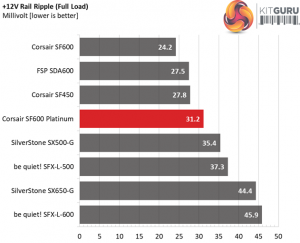
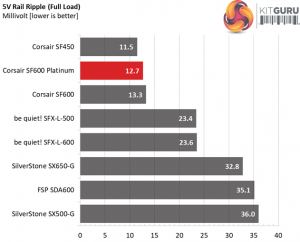
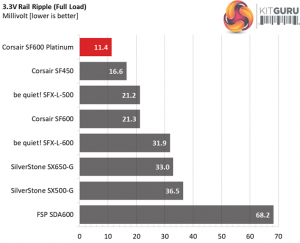
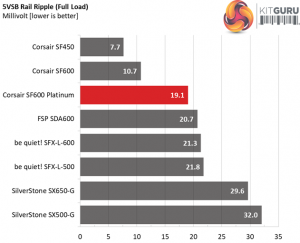
The SFX form factor doesn't provide enough space for a large number of filtering caps in the secondary side, so you should not expect to see the jaw-dropping results that some of the ATX units achieve. Nonetheless, the SF600 Platinum registers a very good overall performance. We would be fully satisfied though if ripple at +12V was close to 25mV, in the worst case scenario.
Ripple Oscilloscope Screenshots
The following oscilloscope screenshots illustrate the AC ripple and noise registered on the main rails (+12V, 5V, 3.3V and 5VSB). The bigger the fluctuations on the screen, the bigger the ripple/noise. We set 0.01 V/Div (each vertical division/box equals 0.01V) as the standard for all measurements.
Ripple At Full Load
Ripple At 110-Percent Load
Ripple At Cross-Load 1
Ripple At Cross-Load 2
To learn more about our EMI testing equipment, please check out How We Test Power Supply Units.
The conducted EMI emissions are low, as you can see in the graph above. The unit's EMI filtering stages do a great job.
Performance Rating
The following graph shows the total performance rating of the SF600 Platinum, comparing it to other units we have tested. To be more specific, the tested unit is shown as 100 percent, and every other unit's performance is shown relative to it.
Hand's down this is the best performer in the SFX category, with SilverStone's passive unit coming second. Corsair along with Great Wall proved for another one time that they are on top of the game.
Performance Per Dollar
The following chart may be the most interesting to many of you because it depicts the product’s performance-per-dollar score. We looked up the current price of each PSU on popular online shops and used those prices and all relative performance numbers to calculate the index. Note that all of the numbers in the following graphs are normalized by the rated power of each unit.
The Gold SF600 unit achieves a higher performance per buck compared to its Platinum sibling. So if you are not interested in having the highest possible efficiency, you could spend less and get the plain SF600 which features high performance as well, but it is not as silent as the high-end model.
Noise Rating
The graph below depicts the cooling fan's average noise over the PSU's operating range, with an ambient temperature between 30°C and 32°C (86°F to 89.6°F).
The noise difference between the Gold and the Platinum SF600 models is chaotic. This doesn't mean that the SF600 Gold is noisy, quite the opposite we could say but only under normal operating conditions. Once you push hard its minor rails the fan profile gets too aggressive, with the semi-passive operation lasting for a very short period.
Efficiency Rating
The following graph shows the PSU's average efficiency throughout its operating range, with an ambient temperature close to 30°C.
SilverStone's passive unit shows its teeth here, however it is easier for it to achieve higher efficiency since it has 150W less and it doesn't employ a cooling fan, which also consumes a (small) amount of power. The SF600 Platinum fares pretty well, achieving the third place in this long list.
The Corsair SF600 Platinum retails for $149.99 in the US while in the UK market it is sold for £124.99 at Overclockers UK.
Corsair took the already very good SF600 Gold model and delivered markedly superior performance with this new Platinum design. The overall performance of the Platinum model is around 4% higher. Additionally in regards to noise output, the Corsair SF600 Platinum is very much improved over the older model.
This is because Great Wall fixed the fan profile and made it less susceptible to the load of the minor rails. The SF600 Gold is very silent but only when the load at 5V and 3.3V stays at low to mid levels. If for some reason you push those rails hard, the fan profile gets very aggressive and can easily force the fan to spin at full speeds. Definitely not many of you will apply enough load to make those two insignificant rails deliver so much load, however still I have to take this extreme case scenario under consideration.
Currently the SF600 Platinum is the best SFX unit that money can buy today. It sports super tight load regulation, high efficiency, good transient response, clean voltage rails and the cherry on top is the quiet operation even under extremely tough conditions. Moreover, its build quality is top-notch and it is covered by a seven year warranty.
So what not to like in a great PSU like this one? Well, since I am extra picky and highly experienced in spotting shortcomings (thanks to more than a thousand PSU evaluations that I have conducted so far), I do have some observations to make.
In my opinion Corsair need to change the cable configuration with this 600W model, instead of sharing exactly the same with the 450W unit. This was the case with the older SF models and I complained about that, too. In my opinion a high-end mid capacity PSU like the SF600 Platinum should be equipped with a couple of EPS connectors and four PCIe ones, giving the option for two cable configurations: either two EPS and two PCIe or a single EPS along with four PCIe. Such a cable configuration would allow the PSU to power a strong gaming system or a video/graphics editing PC, equipped with a multi-core CPU that needs lots of power.
Another fact that could damage sales of this product is the leaked information on the upcoming SF750. As I see it many users wanting a high capacity SFX PSU will probably prefer to wait a bit longer for the SF750 model, which will be the strongest in the SFX category. You tend to pay more for SFX anyway, so the predicted small increase in price from 600W to 750W would likely be accepted by the discerning audience.
Corsair clearly has the performance lead in the SFX category, right now. Both SF Gold and SF Platinum lines offer stellar performance and once the SF750 is out, it will surely rock the boat and solidify Corsair's domination in the PSU market.
You can get the of the Corsair SF600 Platinum from Overclockers UK for £124.99 inc VAT HERE.
Pros:
- Delivered full power at 47°C.
- High power density.
- Efficient.
- Highly efficient 5VSB rail.
- Top performance in all sections.
- Silent.
- Excellent build quality.
- Fully modular.
- Individually sleeved cables.
- SFX-to-ATX bracket provided.
- 7-year warranty.
Cons:
- I would like to see two EPS connectors (and ideally four PCIe).
- The semi-passive operation cannot be deactivated.
- Turn-off overshoot at +12V should be lower.
- High inrush current with 230V input.
KitGuru says: If you can afford the price and don't have a problem with the single EPS and the two PCIe connectors, the SF600 Platinum is the best SFX unit that money can buy today. Its lead in our performance charts won't last for long though, since Corsair will soon release the SF750, which will definitely change the status quo in the small form factor power supply category.
 KitGuru KitGuru.net – Tech News | Hardware News | Hardware Reviews | IOS | Mobile | Gaming | Graphics Cards
KitGuru KitGuru.net – Tech News | Hardware News | Hardware Reviews | IOS | Mobile | Gaming | Graphics Cards


